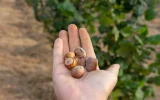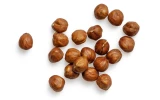How Do You Harvest Hazelnuts Commercially?
As the hazelnuts mature, they naturally detach from the trees and fall to the ground, making it possible to gather them efficiently. Specialized machinery facilitates this process in commercial orchards, streamlining the collection and ensuring that the nuts are harvested quickly to prevent spoilage or damage from ground moisture and pests. In this article, we'll find out the different methods of collecting hazelnuts in a commercial setting.
For more efficient harvesting on large-scale hazelnut farms, mechanical harvesting methods are typically involved. Mechanical harvesters are often used to maneuver easily through the orchard rows to scoop up the fallen nuts. The nuts are then swept by a sweeper, allowing the harvester to pick them up more effectively.
Harvesting hazelnuts commercially can also be done by manual harvesting methods, such as by hand or by using a pole. As you read further, we'll discuss how each method is done and whether it is efficient for large-scale operations.
Summary
- For small or specialized orchards, hand-picking or using simple tools such as poles is better for harvesting hazelnuts because it's gentler on the environment and helps ensure high-quality nuts, even though it takes more work and time.
- For big commercial hazelnut orchards, using machines like tree shakers and sweepers is better because it's much faster and helps get all the nuts harvested at the right time.
- While mechanical innovations bring efficiency and labor savings, the use of heavy machinery can impact wildlife and lead to soil compaction, potentially harming tree health and productivity.
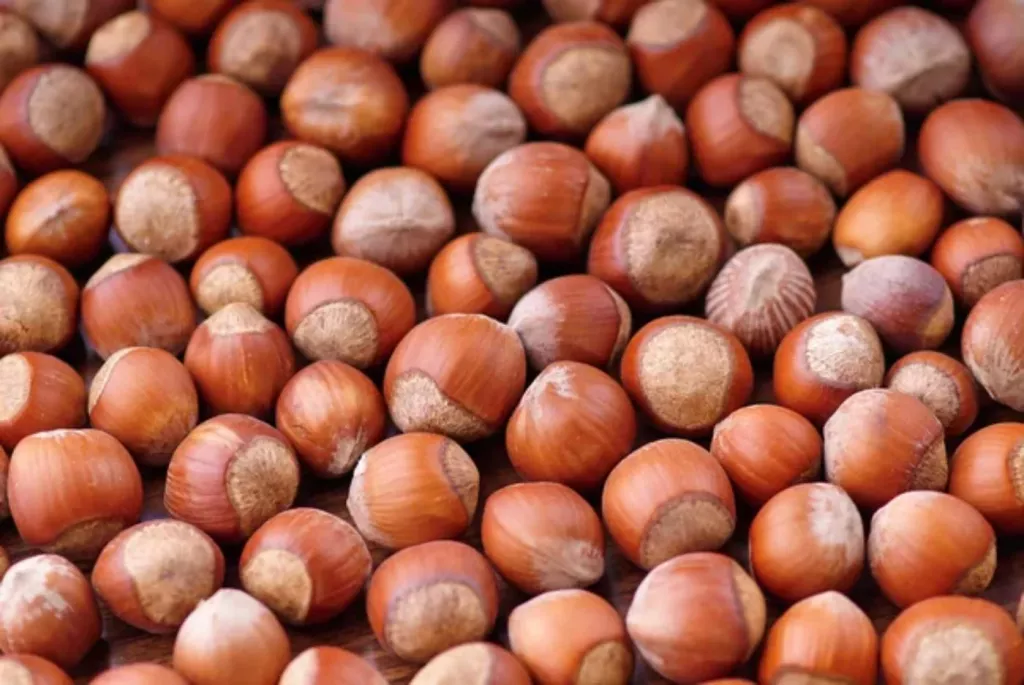
On this page:
Harvesting Strategies for Commercial Hazelnut Production
When you look to harvest hazelnuts commercially, you're typically choosing between manual methods or leveraging mechanical innovations for greater efficiency. The table below shows a detailed comparison between each method:
| Harvesting Strategy | Description | Tools/Equipment Used | Suitable for Orchards |
|---|---|---|---|
| Manual harvesting | |||
| By hand | Collecting hazelnuts directly from the bushes when ripe, often by shaking the branches and picking nuts from the ground. | Gloves, baskets | Small-scale or specialty orchards |
| Using poles | Employing poles to knock nuts from higher branches without climbing. | Poles | Orchards with taller bushes and trees |
| Mechanical harvesting | |||
| Tree shakers | Using machines to grasp and shake the trunk or a major limb, causing ripe hazelnuts to fall. | Tree shakers | Large-scale commercial operations |
| Sweepers and harvesters | Collecting nuts into rows with sweepers post-shaking, and then picking them up with harvesters. | Sweepers, harvesters | Large-scale operations with varying terrains and orchard sizes |
Collecting Hazelnuts Using Manual Harvesting Methods
While modern agriculture often relies on mechanized equipment to streamline operations, many orchards still employ manual harvesting methods. These traditional techniques, which involve hand-picking or shaking the trees to collect ripe nuts, are deeply rooted in agricultural practices and remain relevant today.
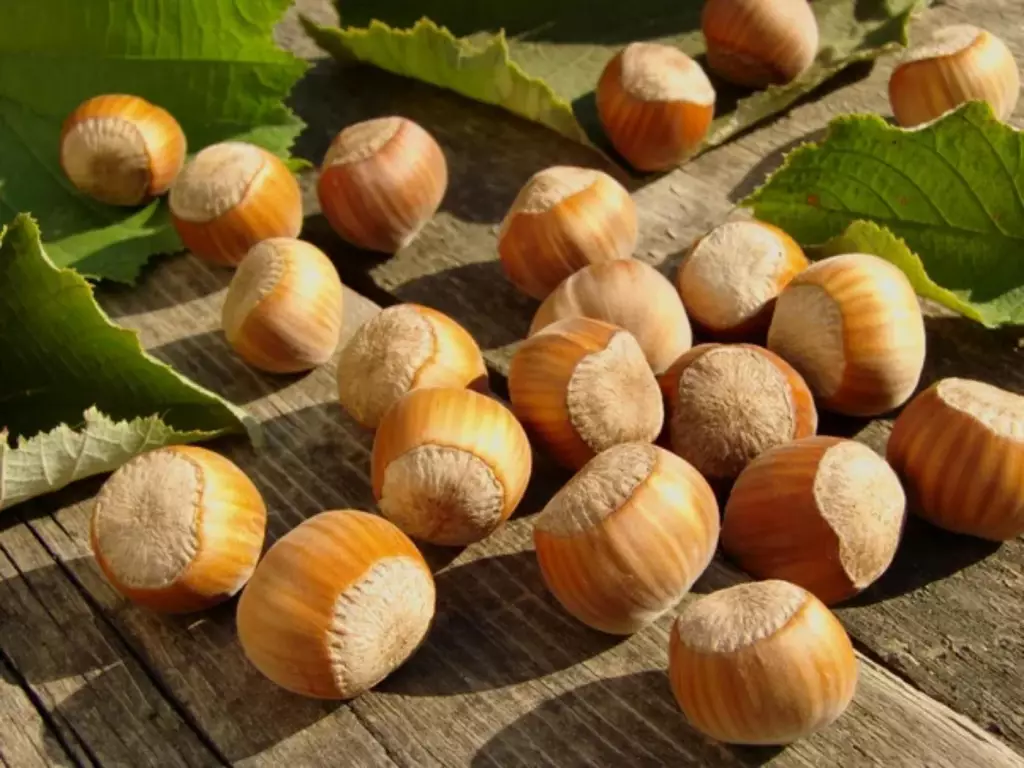
In this section, we will explore the nuances of manual harvesting methods for hazelnuts, examining their benefits and challenges, and discussing the circumstances under which they are most effectively employed in commercial orchard settings.
Harvesting hazelnuts by hand
Hand-harvesting hazelnuts directly from the bushes can be a method used in commercial hazelnut orchards, particularly in regions where traditional or labor-intensive methods are preferred or where the use of machinery is not feasible due to terrain or the scale of the operation.
However, there are several factors to consider when evaluating the effectiveness and suitability of this method for commercial hazelnut production:
Hand-harvesting requires higher labor costs
Hand harvesting is labor-intensive and can significantly increase the cost of production due to the high demand for manual labor. In regions with high labor costs, this method might not be economically viable for a commercial operation.
Hand-harvesting might not be efficient for large-scale operations
Hand harvesting is much slower compared to mechanical harvesting methods. For a commercial orchard, where time is of the essence, especially during the narrow harvest window, hand-harvesting may not be efficient enough to collect all nuts in a timely manner, potentially leading to yield losses.
Hand-harvesting makes quality control easier
Hand harvesting allows for immediate quality control, as pickers can select the best nuts and leave behind any that are not up to standard. This can result in a higher-quality product, which might justify a premium price.
Hand-harvesting has less environmental impact
Hand harvesting is less disruptive to the environment compared to mechanical harvesting, which can sometimes damage the trees and the surrounding soil structure. This method can be seen as more environmentally friendly, which might appeal to certain markets.fs
Hand-harvesting is more aligned with the harvest timing
Hand-harvesting allows for more precise timing since workers can pick the nuts as soon as they ripen. This can lead to a fresher product and can be advantageous for market timing. You can find out more about the fruiting time of different hazelnut species as you read this article.
Hand-harvesting requires lower investment
The initial investment for hand-harvesting is lower than that for mechanical harvesting equipment. This can be an advantage for start-ups or smaller operations that cannot afford expensive machinery.
Harvesting hazelnuts using poles
Using poles to harvest hazelnuts in commercial orchards is a method that has both advantages and disadvantages:
Advantages of using poles
-
It promotes safety: By using poles to knock down nuts, workers remain on the ground, which reduces the risk of falls and injuries associated with climbing trees or using ladders.
-
It is more efficient: For moderately tall trees, poles can be a quick way to dislodge nuts, allowing workers to move from tree to tree without the need to set up ladders or other climbing equipment.
-
It does not cost much: Poles are relatively inexpensive compared to other mechanical harvesting equipment, which can be a significant advantage for smaller operations or those with budget constraints.
-
It is simple and accessible: The technique is straightforward and does not require extensive training or specialized skills, making it accessible for most workers.
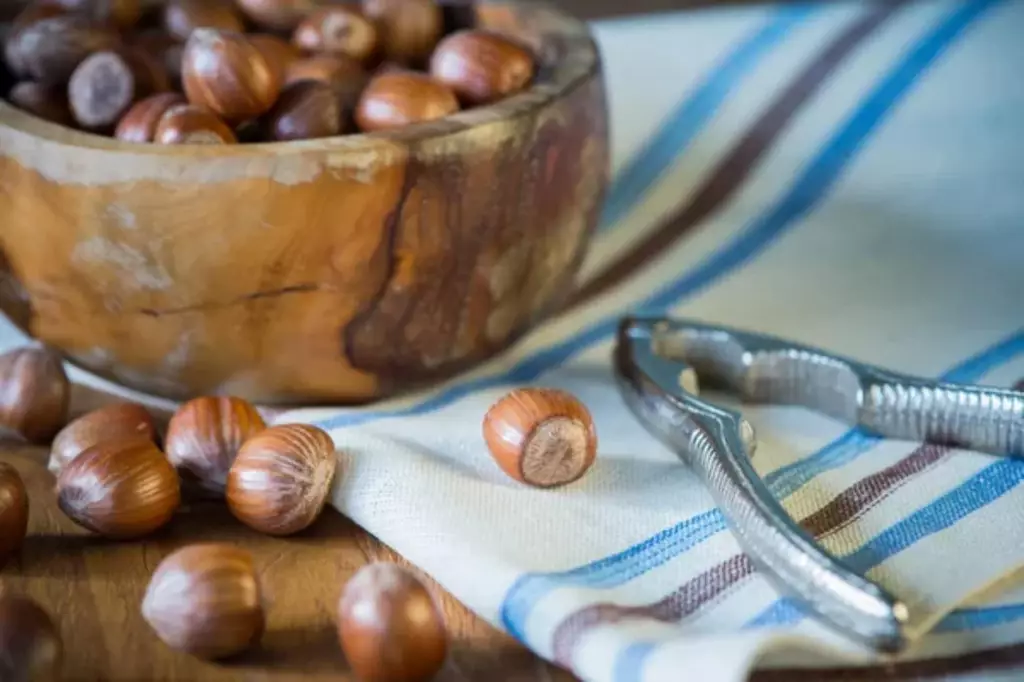
Disadvantages of using poles
-
It damages the trees: If not used carefully, poles can damage branches and buds, which can affect the future yield and health of the trees.
-
It can lead to an incomplete harvest: Poles may not be as effective at dislodging all the nuts, particularly those that are tightly clustered or stuck in the canopy, leading to an incomplete harvest.
-
It is labor-intensive: Although using poles can be efficient for smaller orchards, it is still a labor-intensive process that may not be practical for larger commercial operations. The repetitive motion of knocking nuts can be physically demanding and may lead to worker fatigue or strain injuries over time.
-
It can affect the quality of the nuts: Nuts falling from a height can impact the ground and potentially become embedded in the soil, making them harder to collect and increasing the risk of loss. There is also less control over the condition in which the nuts fall, which can lead to bruising or damage to the nuts themselves, potentially reducing their quality and market value.
Collecting Hazelnuts Through Mechanical Innovations
In this section, let's explore the cutting-edge machinery that has become essential to modern hazelnut orchards, and how these tools have changed the landscape of agricultural practices:
Employing tree shakers to harvest hazelnuts
Tree shakers are a common method used in commercial hazelnut orchards and can be quite effective for a number of reasons:
Tree shakers are highly efficient at harvesting nuts
They can significantly reduce the time and labor required to harvest a large orchard compared to handpicking. A tree shaker can harvest a tree in a matter of seconds, which is particularly beneficial for large-scale operations where time is a critical factor during the short harvest season.
Tree shakers are cost-effective
Although the initial investment in a tree shaker can be substantial, the labor savings over time can make it a cost-effective choice for commercial growers. Reduced labor costs can lead to a lower overall cost of production, which is beneficial for the profitability of the orchard.
Tree shakers can provide a more uniform harvest than manual shaking or picking
They are designed to apply a consistent force that can be adjusted for the size and structure of the tree, which helps to ensure that most of the ripe nuts are harvested at the same time.
Tree shakers reduce labor dependency
With the agricultural sector often facing labor shortages, mechanization can help reduce the dependency on seasonal labor. This can be particularly advantageous in regions where it is difficult to find sufficient labor during the harvest season.
However, there are also some considerations and potential downsides to using tree shakers in hazelnut orchards:
Tree shakers can be costly
The initial cost of purchasing a tree shaker can be high, which may be a barrier for smaller operations or those with limited capital. For hazelnut farming to be profitable, investing in machinery for harvesting is needed.

Tree shakers can damage the tree
If not used properly, tree shakers can damage the trees, affecting their health and productivity. Excessive shaking or shaking of trees that are not structurally sound can break limbs and damage the trunk.
Tree shakers can impact wildlife and the environment
The use of tree shakers can potentially impact wildlife that may be living in or around the trees, such as birds or squirrels.
It may also have environmental implications, including fuel consumption and emissions from the machinery. Orchard managers must consider these factors and may need to adopt practices to mitigate environmental impacts.
Tree shakers can cause soil compaction
The heavy equipment used for shaking and collecting the nuts can lead to soil compaction around the trees, especially if the orchard floor is not managed properly.
Soil compaction can impede root growth, reduce aeration, and negatively affect water infiltration, which can have long-term effects on tree health and productivity.
The use of tree shakers may require replanning orchard design
To maximize the effectiveness of tree shakers, orchards may need to be designed or modified to accommodate the machinery.
This includes considerations such as tree spacing, row width, and the selection of tree varieties that can withstand mechanical shaking without sustaining damage. For more tips on how to space your hazelnut orchard for easier access for tree shakers, you can read this article.
Utilizing Sweepers And Harvesters To Collect Hazelnuts
The use of sweepers and harvesters in commercial hazelnut orchards is a common and generally effective method for collecting nuts after they have been dislodged from the trees.
This method involves several steps and can be highly beneficial for commercial operations due to its efficiency, speed, and reduced labor requirements. Here's a detailed discussion of this method:
1. Use mechanical shakers
The first step in the process is to shake the trees, which can be done using mechanical shakers that grasp the trunk or limbs of the hazelnut trees and shake them vigorously.
This causes the nuts to fall to the ground. Shaking is typically timed to coincide with the peak ripeness of the nuts to ensure maximum yield.
2. Employ sweepers
Sweepers are specialized machines that move the nuts into neat rows or windrows, which makes it easier for the harvesters to collect them.
These can be adjusted to the specific conditions of the orchard, such as row spacing and terrain. This adaptability is crucial for maintaining efficiency across different orchard designs and topographies.
3. Utilize the mechanical harvester
Harvesters follow the sweepers and pick up the nuts from the rows. These machines often have a picking mechanism, such as rotating rods or belts, that separate the nuts from debris like leaves, twigs, and soil.
The nuts are then collected into bins or hoppers for further processing. Harvesters come in various sizes and capacities to accommodate different scales of operations, from small family farms to large commercial orchards.
This method is highly efficient, as it allows for the rapid collection of nuts once they have fallen. In large commercial operations, time is of the essence, especially considering that hazelnuts can be susceptible to mold and quality degradation if left on the ground for too long.
By using mechanical sweepers and harvesters, the need for manual labor is greatly reduced, which can result in significant cost savings for growers.
Modern sweepers and harvesters can also be adjusted to handle various terrains found in hazelnut orchards. Whether the ground is flat or sloped, these machines can be set up to operate effectively, which is important for maintaining a consistent and thorough harvest.
The careful design of sweepers and harvesters can minimize damage to the nuts, as well as to the trees and the orchard floor. This is important for maintaining the quality of the harvest and ensuring the longevity and health of the orchard.
While the initial investment in mechanical sweepers and harvesters can be significant, the long-term benefits often outweigh the costs. Increased efficiency, reduced labor, and improved nut quality can all contribute to a better bottom line for commercial hazelnut producers.

Although mechanical harvesting can have environmental impacts, such as soil compaction from heavy machinery or the potential for increased fuel use, these impacts can be mitigated through proper management practices, such as controlled traffic patterns in the orchard and regular maintenance of equipment to ensure optimal performance and fuel efficiency.
Commercial Method of Propagating Hazelnuts
Two primary methods are commonly used in the commercial propagation of hazelnuts: layering and grafting. Each technique has its own set of advantages and disadvantages, and they are often chosen based on the specific goals and circumstances of the grower.
Growing hazelnuts by layering
Layering is a vegetative propagation method where a branch of the parent plant is encouraged to form roots while still attached to the main plant. Once the roots have developed sufficiently, the branch can be detached and planted as an independent plant.
Pros of the layering method
-
True-to-type plants: Layering produces genetically identical plants to the parent, ensuring the perpetuation of specific desirable traits without the variability that comes with seed propagation.
-
Simplicity: The process is relatively simple and does not require the same level of skill as grafting. It can often be done by the growers themselves without specialized equipment.
-
Reduced stress on plants: Since the new plants maintain a connection to the parent plant until they have developed their own roots, they are less likely to suffer from transplant shock when separated.
-
Cost-effectiveness: Layering is generally less expensive than grafting because it doesn't require rootstock or the same level of labor and expertise.
Cons of the layering method
-
Time-consuming: Layering can be a slower process compared to grafting, as it takes time for the branch to develop roots.
-
Space requirements: The parent plant must be accessible and have sufficient space around it to accommodate the layering process.
-
Limited production: The number of new plants that can be produced from a single parent is often limited compared to other methods.
Propagating hazelnuts through grafting
Grafting involves joining the tissue of one plant (the scion) to the tissue of another (the rootstock), allowing them to grow together into a single plant. The scion is the desired hazelnut variety, while the rootstock is selected for its disease resistance and other beneficial traits.
Pros of grafting
-
Disease resistance: By choosing a rootstock that is resistant to certain diseases, the grafted plant can inherit this resistance, which is crucial for commercial production. A disease-resistant variety of hazelnuts is the Barcelona variety.
-
Adaptability: Grafting allows for the combination of different plant traits, such as drought tolerance or soil adaptability, which can be especially important in areas with challenging growing conditions.
-
Efficient use of space: Grafted plants can often be planted more densely than those propagated by layering, as the rootstock can control the size of the tree, leading to more efficient land use.
-
Consistency and uniformity: Grafting can produce a large number of uniform plants that mature at the same rate, which is beneficial for commercial harvesting and management.
-
Speed: Once the technique is mastered, grafted plants can be produced more quickly than those from layering, allowing for faster establishment of orchards.
Cons of grafting
-
Skill and labor-intensive: Grafting requires more skill and experience than layering. It is a delicate process that requires precise cuts and careful handling to ensure successful union and growth.
-
Higher labor cost: The process requires the purchase of rootstock and may involve more labor costs, making it more expensive than layering.
-
Risk of incompatibility: There is a chance that the scion and rootstock will not be compatible, leading to a failure of the graft. This can result in wasted time and resources.
-
Potential for disease transmission: If not done properly, grafting can transmit diseases from the scion or rootstock to the new plant.
-
Requiring more maintenance: Grafted plants may require more maintenance, such as staking and careful pruning to ensure the graft union remains healthy and strong.
